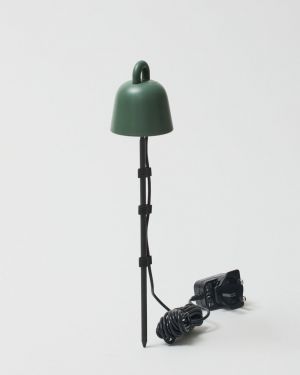Plants are a great way to boost our mood over winter and they can help to keep stress at bay, so it’s time we also made sure our little green amigos have everything they need to get through the worst of winter too.
You may be wondering what the optimal light solution is for your indoor plants to thrive, irrespective of the season. We’ll give you the lowdown on the science; why and how plants use light, what kind of light they need, and which types of plants in particular benefit from indoor lighting. With that in mind, our latest blog covers the key benefits of grow lights for indoor plants, and if you need one
All you need to know: benefits of grow lights for indoor plants
A quick recap on photosynthesis
Now, most of us get the high-level points of photosynthesis, although the details are somewhat sketchy, as it’s thankfully been a while since we had the dreaded double biology lesson on a Thursday after lunch.
So here’s a gentle recap; plants derive energy from the sun and then use that energy to grow more (alongside using water and carbon dioxide). The plot thickens, however, as certain plants can require more sun than others and also benefit from different kinds of wavelengths, which we’ll come onto shortly.
Without enough light, plants won’t grow to be their best. They can grow leggy, trying to ‘reach for light', and without chlorophyll, an important byproduct of light, they’ll also lose their colour a bit and generally look a bit lacklustre. Pretty much the same thing happens to us humans, especially after the long winter, and the best cure for us, just as it is for plants, is a good dose of sunlight. The good thing for plants is that they don’t need to go all the way to Spain for a bit of sun; there are many benefits and options of grow lights for your indoor plants to keep them looking their best all year round.
What types of grow lights work best for indoor plants?
When it comes to the kind of lights that work best, consider nature’s original lighting; the sun.
The sun is a great source of light because it provides a ’full spectrum’ of light. These are the electromagnetic wavelengths that a light source produces, which are very beneficial for plants.
Plants benefit most from light that sits within the 400-700 nanometres (nm) spectrum. This is known as the photosynthetically active radiation (PAR) range. Within this range, the blue light spectrum, measured at around 400 nm, is considered ideal for establishing a plant's vegetative and structural development, whereas a wavelength of 700 nm, known as ‘red light’, is ideal for a plant’s flowering stage.
So a ‘full spectrum’ light that combines red and blue light is money well spent. When it comes to buying a full spectrum, LED lights are probably the best option for most indoor plant lovers for a couple of reasons. First, they’re much cheaper than traditional sources of lighting given how super-efficient and long-lasting they are compared to other bulb types, and secondly, LEDs don’t give off as much heat, which can damage plants. However, one potential downside of LEDs is that they can have a somewhat higher upfront cost compared to other types of bulbs.
Fluorescent bulbs can be a good option. They tend to be energy efficient (although not typically as efficient as LED), although have a lower upfront cost. Incandescent bulbs aren’t so great; an expensive option that creates a lot of heat.

LED Grow Light
Types of Plants Need a Grow Light
Regular indoor plants do not tend to need indoor grow lights, but culinary herbs, carnivorous plants and succulents all benefit from good quality light sources.
Botanists call plants in this group, ‘long-day plants', and as the name suggests, these sun-worshippers can require up to 14-18 hours of light each day. Most seedlings for vegetables and garden flowers fall into this category and hence, if you’re trying to grow your own vegetable garden indoors, they’ll definitely need a lot more light than your typical houseplant
The Stem’s Indoor Grow Light Range
If you’re looking for a good all-round LED light to get started, have a look here. The Elho LED light is the perfect solution for a medium or large-sized plant that needs a bit of extra love and would be grateful to spend some one-on-one time with Elho to get revitalised. The Elho LED light uses bulbs indoor plant light specialist company and has a mixture of blue, white and red light; a perfect all-rounder for your indoor planting needs.
For a mini-herb garden, look no further than our great little herb light garden here. Perfect for several of your favourite kitchen herbs to grow and some very fresh zing into your cooking.
Winter may be coming, but fear not, as our LED grow lights will give your plants going until next spring and beyond.

Herb Light Garden